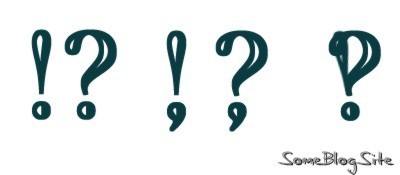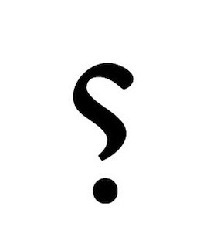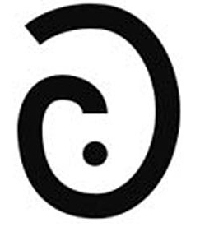當(dāng)前位置: Language Tips> 雙語(yǔ)新聞
Meet The Obscure Exclamation Comma: Because Excitement Can Happen In The Middle Of A Sentence
分享到

World, meet the exclamation comma -- the punctuation mark you didn't know existed, but that you almost certainly need in your life.
大家來(lái)歡迎感嘆逗號(hào),你可能不知道有這樣的標(biāo)點(diǎn)符號(hào)存在,但生活中絕對(duì)會(huì)用得到。
The exclamation comma is, as its name suggests, a symbol that looks like an exclamation point, only with a comma instead of a period at its base. As the Grammarly blog noted this week, it's used just like an exclamation mark “to denote excitement, add flourish, and generally lend a statement a certain degree of emotion and emphasis,” but it's to be placed within sentences rather than at the end of them.
從它的名字“感嘆逗號(hào)”就可以看出,這個(gè)標(biāo)點(diǎn)符號(hào)外形像個(gè)感嘆號(hào),只不過(guò)尾部的標(biāo)點(diǎn)不是句點(diǎn),而是個(gè)逗號(hào)。據(jù)語(yǔ)法博客介紹,感嘆逗號(hào)的用法和感嘆號(hào)相同,“用于表現(xiàn)興奮、增強(qiáng)語(yǔ)氣、為一句話增添感情色彩并表示強(qiáng)調(diào)意味,”不過(guò),感嘆逗號(hào)應(yīng)該用在句子中間,而不是句子結(jié)尾處。
For example:
“That velociraptor is so scary [insert exclamation comma] but don't worry, he's not going to eat you.”
例如:
“那個(gè)迅猛龍好嚇人(插入感嘆逗號(hào)),不過(guò)別擔(dān)心,他不會(huì)吃了你的。”
The exclamation comma was reportedly created by American inventors Leonard Storch, Haagen Ernst Van and Sigmund Silber in 1992, who also lobbied for its widespread adoption. However, their patent for the symbol lapsed in 1995, and their effort to popularize it ultimately failed.
據(jù)稱(chēng),感嘆逗號(hào)是由美國(guó)發(fā)明家李?yuàn)W納·史托奇、恩斯特·范哈根和席蒙·施爾柏在1992年發(fā)明的,他們同時(shí)也大力游說(shuō)推廣該符號(hào)的廣泛使用。不過(guò),他們?yōu)樵摲?hào)申請(qǐng)的專(zhuān)利于1995年失效,而他們的推廣行動(dòng)也以失敗告終。
Interest in the exclamation comma has surged this week after the Grammarly blog's post on it, but it's not the only obscure punctuation mark that deserves attention.
本周語(yǔ)法博客發(fā)布相關(guān)文章以后,人們對(duì)感嘆逗號(hào)的興趣被激發(fā)出來(lái)。其實(shí),感嘆逗號(hào)并不是唯一一個(gè)值得被關(guān)注的過(guò)時(shí)的標(biāo)點(diǎn)符號(hào)。


irony mark & sarcasm mark
For instance, there's the question comma (the exclamation comma's inquisitive cousin), the SarcMark (short for “sarcasm mark”), the irony mark and the wonderfully-named Interrobang (which looks like what would happen if an exclamation point and a question mark jumped into bed together).
比如,我們有問(wèn)逗號(hào)(感嘆逗號(hào)在疑問(wèn)家族的表親)、諷刺號(hào)、反諷號(hào)以及有著好聽(tīng)名字的疑問(wèn)驚嘆號(hào)(這個(gè)符號(hào)看上去像感嘆號(hào)和問(wèn)號(hào)一起躺在床上)。

Interrobang
英文來(lái)源:赫芬頓郵報(bào)
譯者&編輯:馬文英
上一篇 : 就業(yè)難?淘寶“賣(mài)”畢業(yè)生
下一篇 : 來(lái)一瓶“希臘退歐”酒可好?
分享到
關(guān)注和訂閱


口語(yǔ)
關(guān)于我們 | 聯(lián)系方式 | 招聘信息
電話:8610-84883645
傳真:8610-84883500
Email: languagetips@chinadaily.com.cn